Mentorship Program Widgets are tools to enhance new contributors’ on-boarding process and experience. Current contributors can easily check on their mentees and provide guidance as needed.

Fedora is an operating system developed by the community-supported Fedora Project and sponsored by the Red Hat company. The purpose of Fedora Hubs is to provide a communication and collaboration center for Fedora contributors of all types. Contributors will be able to visit Hubs to check on their involvement across Fedora, discover new places that they can contribute, and more.
Identify workflow pain points and inefficiencies within FedoraHubs and design widgets with the hopes of increase collaborations among contributors by creating better experiences.
After meeting with our client from Red Hat and had a brief introduction to what Fedora Hubs is about and how it is constructed, we decided to dig deeper within Fedora Hubs and find out the potential problems.
The goal was to understand Fedora contributors' current workflow and identify the areas that can be improved.
Through 5 intensive interviews with contributors from a variety of teams (e.g. communication operations, design, engineering, etc.), we have learned that Fedora is a very diverse and international community. Many of its contributors are scattered across the globe.
Thus, the 3 major pain points we identified are:


After speaking with our client and received feedbacks on our initial design thoughts, we realized that our design direction was too broad and generalized. Users already had their personalized methods for organizing tasks, scheduling meetings across time zones, and communicating within/across teams. Having a new widget to replacing users’ current routine would require a lot of learning and adapting from users. It would also be too difficult to maintain.
Therefore, rather than re-inventing the wheel, we decided to design widgets that would benefit both new and current contributors and help Fedora grow as a community: on-boarding experience.
We then had our second round of interviews with Fedora contributors. The goal was to understand more about the current or past on-boarding process, how it contributes to the overall growth of the community, and see what can be improved.
Here's a sample of our interview protocol.
Key insights
"We need to provide more information to newcomers when assigning tasks."
"We don't know who needs help and we need to familiarize newcomers with Fedora workflow."
"Mentors would be helpful."
On-boarding has been a major pain point for new contributors since each team has its own method of reviewing and accepting new members. New contributors often find it difficult to learn how contribute to the platform. And current members rarely know when new members have joined and what they need to start the journey with Fedora community.
We figured the best way to get to know new members of the teams and keep in touch with them was through a one-on-one mentorship program.
Through on-boarding survey, mentees can choose to request a mentor. Once the pairing is successful, mentees can talk to mentors using IRC channels, emails, and etc.
Widgets will only be available to the mentors, where they can response to requests and guide their mentees through the on-boarding process.
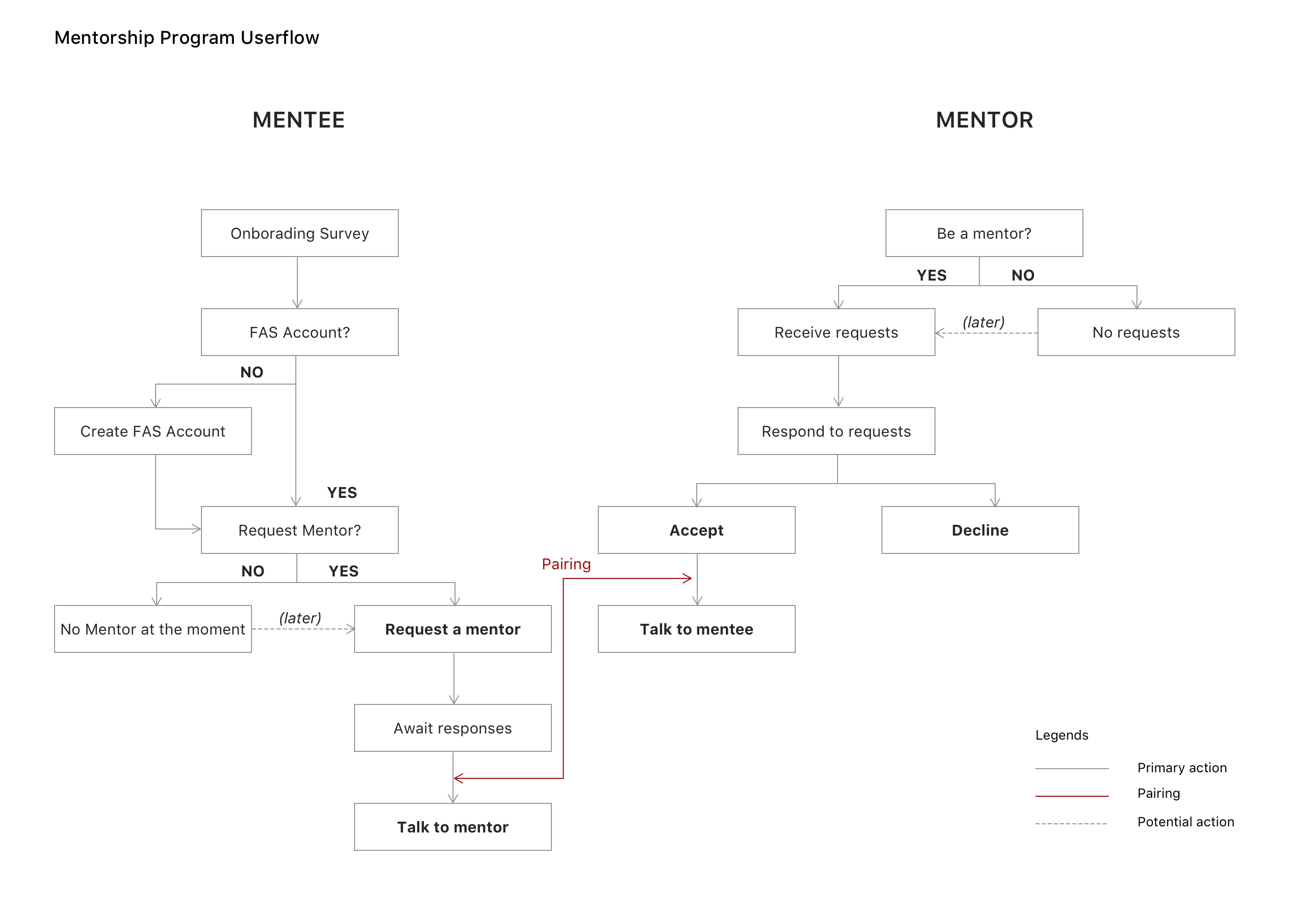
Our initial design was a widget for the mentor to track his/her mentees’ status, recent activities, and accept new mentees.
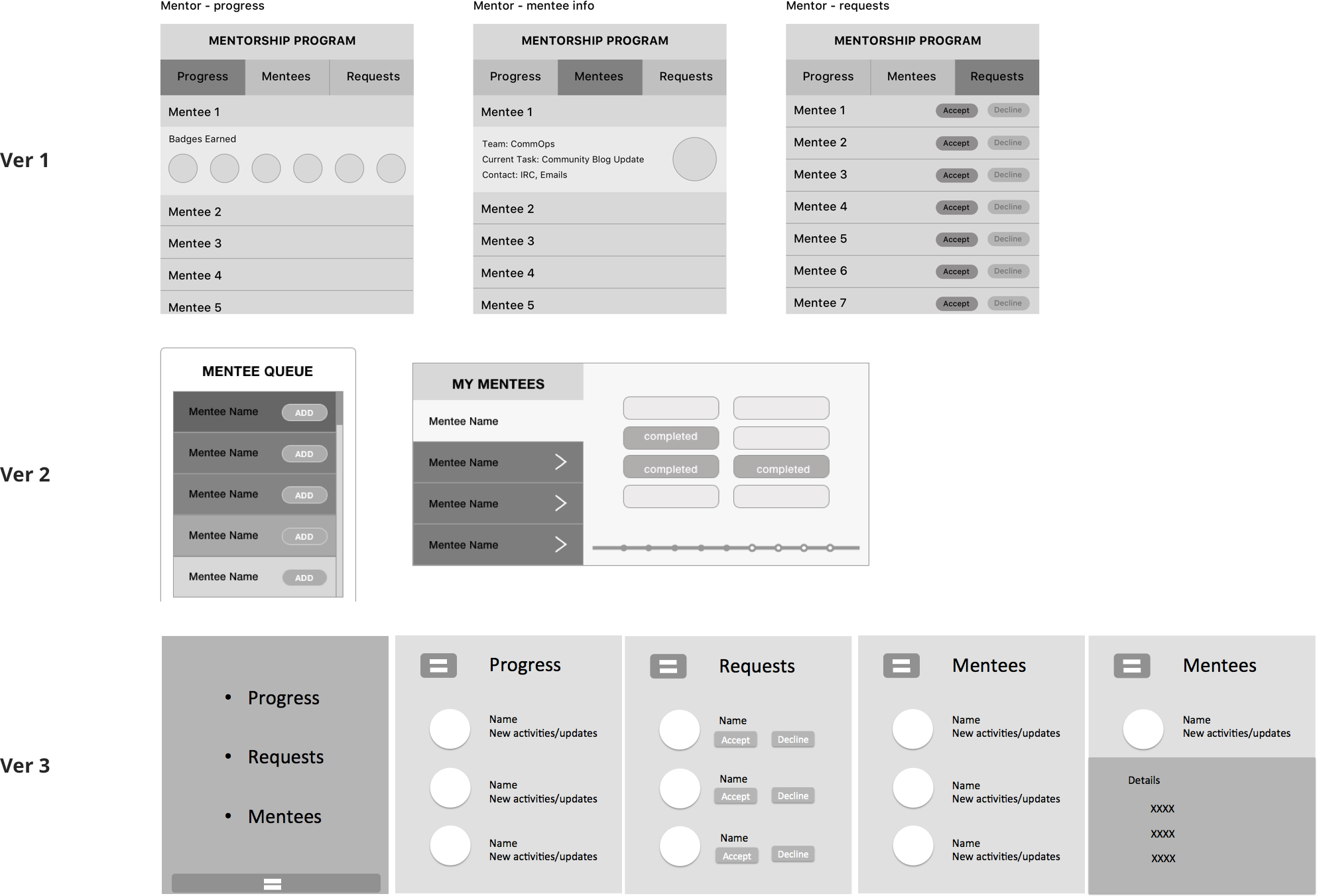
What we didn’t take into considerations was that the mentorship program itself needed a supervision to ensure everything went smoothly.
After testing our medium fidelity prototypes and reviewed our research on the structure of Fedora and the teams, we came up with three different types of widget for our mentorship program and established the following requirements.
1. Mentor Widget — available to any member who is interested in mentoring a new contributor in his/her team

2. Team Leader Widget — available to team leaders to oversee all mentors and mentees in their current team

3. CommOps Widget — available to Communication Operations Team to oversee all mentorship activity across Fedora
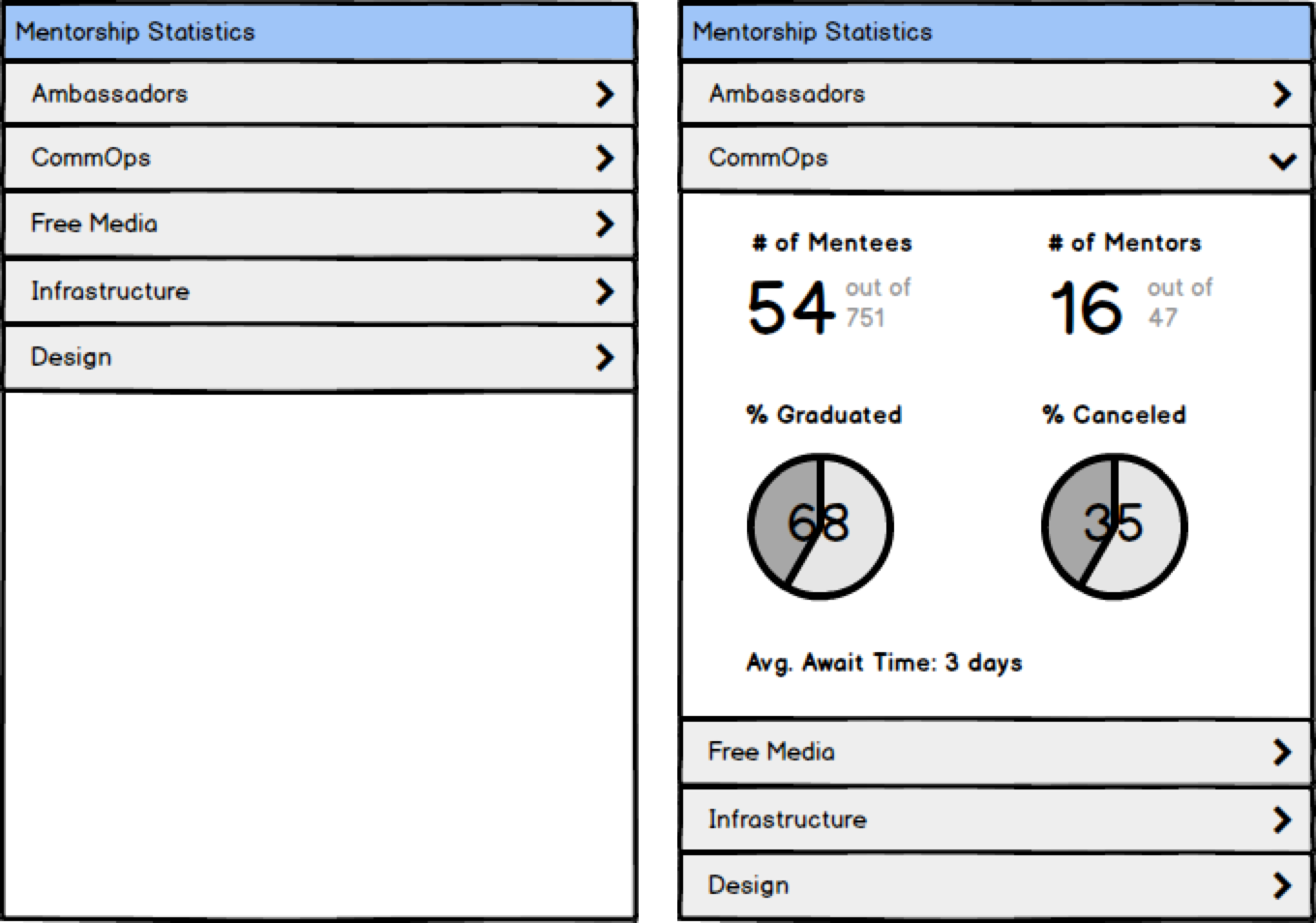
For our final widgets design, we followed the Fedora Hubs design guideline provided by our client.
This widget allows mentors to oversee all current and potential mentees in the team. It has the function of accepting new members from the mentee request queue, and graduating mentees to remove them from the program. The widget is also accompanied by warning messages as a form of quality control and limit user error.
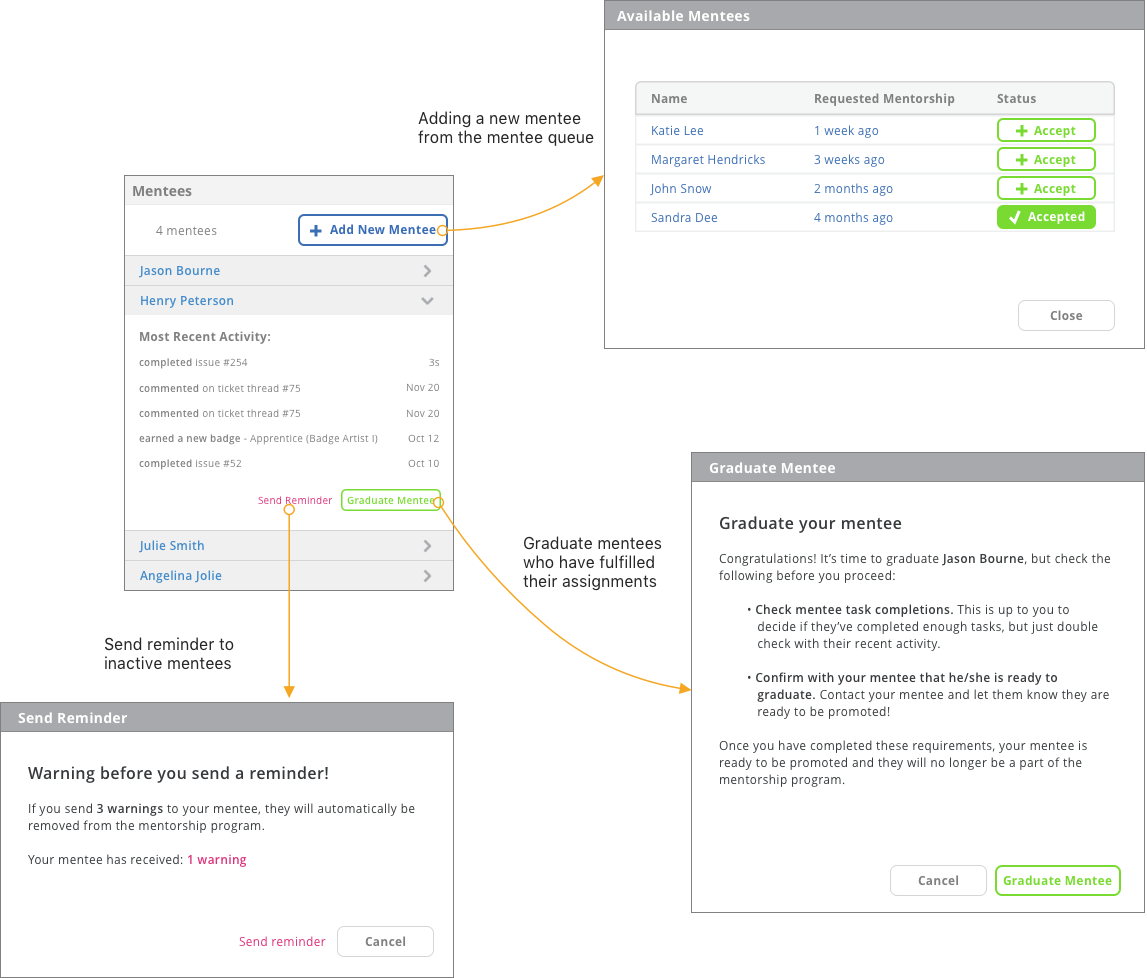
This widget allows team leaders to oversee all mentors and mentee in the team as well as a detailed overview of the status of each mentorship (i.e. ongoing, graduated, cancelled).
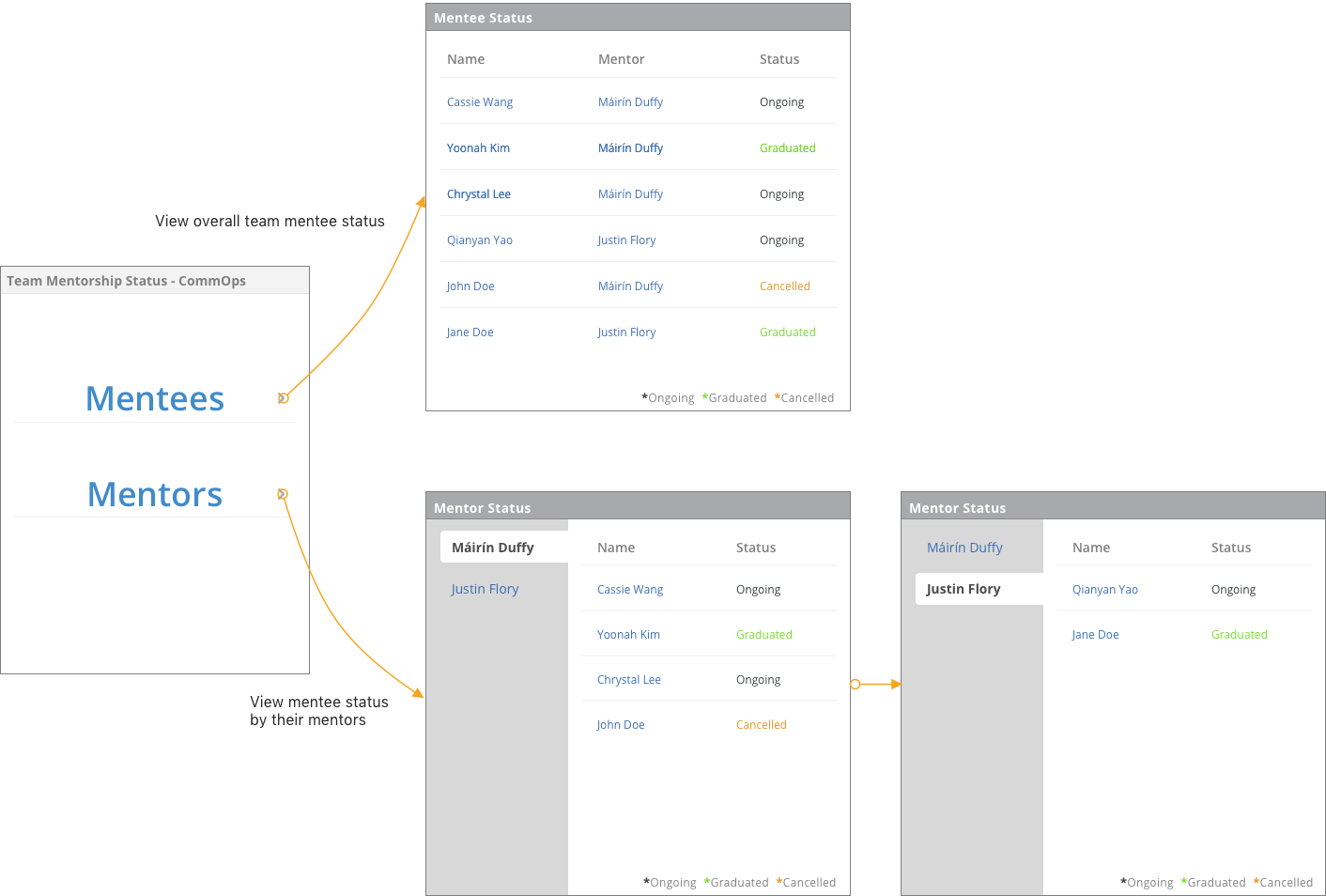
This widgets provides a general overview regarding each team’s mentorship status. It is consisted of a number of numerical analysis of each team, which include the number of active mentors and mentees, percentage of those who graduated or cancelled, and average wait time for mentees to be accepted into the program.
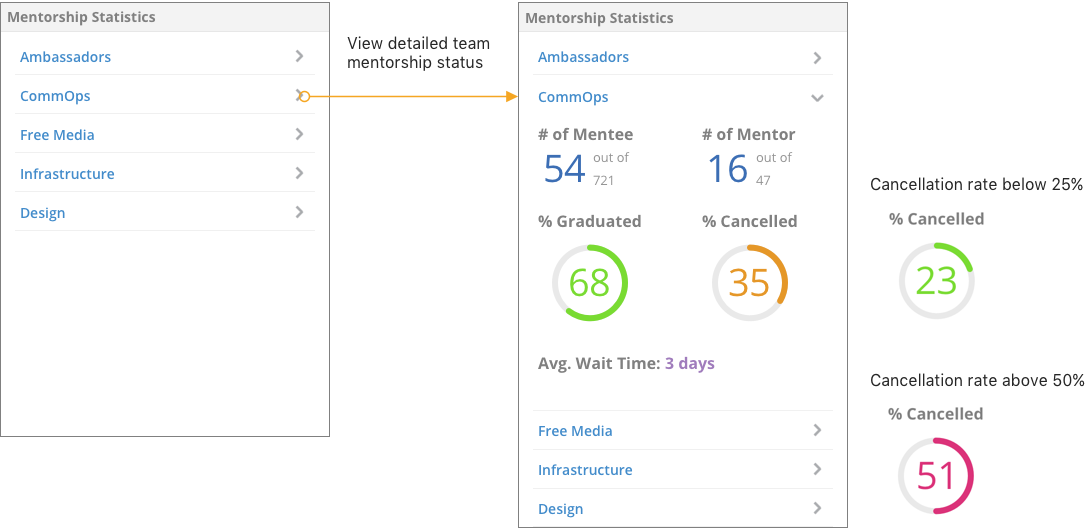
This is a visual summary of the project for our project showcase at the end of semester.

Now when I think about what we could’ve done to improve our process, one thing that pops up in mind is to make a realistic and feasible plan instead of an optimistic one. Setting up a project timeline isn’t about what we think we can do, but what we can practically achieve based on individual skillsets and schedules in a set timeframe. The other thing we could’ve done better is to reach out to our participants sooner while finishing our interview protocol. As designers, knowing our abilities and being able to utilize our time accordingly are also the keys to the success of a project.